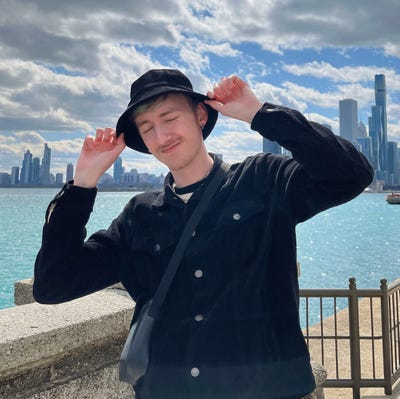Advantek's Ibrahim Mohamed Discusses the Basics of Subsurface Engineering
Ibrahim Mohamed is an Egyptian American engineer working in the world of subsurface engineering. Graduating at the University of Cairo and immediately joining the Advantek Waste Management team, he has worked with the company since.

Ibrahim Mohamed is an Egyptian American engineer working in the world of subsurface engineering. Graduating at the University of Cairo and immediately joining the Advantek Waste Management team, he has worked with the company since. In his fifteen years working in subsurface engineering, he has worked on a variety of different projects and gathered an amazing sense of how broad yet applicable this type of work can be to waste management.
This 40 Under 40 award winner has found his niche and worked both hard and smart to advance to his current vice president level. In this Q&A, Mohamed walks us through what subsurface engineering is, why it’s important and some of the intricate details of the work that he has encountered while exploring this field.
Waste360: What does your work Advantek Waste Management look like?
Mohamed: I'm the VP of Subsurface engineering at Advantek Waste management. My job is basically to lead the engineering team to conduct and do all the subsurface work needed to establish injection wells and maintain the current injection wells to be up and running safely without any environmental hazards that might be caused if they are not operated properly.
Waste360: Is this the main type of work Advantek Waste Management is responsible for?
Mohamed: Advantek actually started in 1990 as a consultant fair. We were helping the leading oil and gas companies in terms of geomechanical analysis or problems that are associated with the injection operation. Ten years ago, we moved from being a consultant firm to becoming an operation or service company where we provide the service ourselves. We now own more than seven facilities where we have our own injection wells. We specialized in oil and gas waste and were handling all the waste that comes out from the exploration and production operation like drill cutting, drilling, mud, produced water, and so on. So now we actually have our own wealth, and we receive the waste from production or from operating companies like BP, Oxy, Eagle Ford, or Berman Basin. We receive the waste and we inject this into our own wells. Besides oil and gas, we also work in non-oil and gas waste. We also have a project in California where we inject biosolids, which is a nice name for sewage, basically.
Waste360: How did you get involved with the company?
Mohamed: I started with Advantek in Cairo, Egypt. I'm Egyptian; originally from Egypt, though I'm a U.S. citizen now. I'm an engineer by background as well. After graduation from Cairo University, I started to work with Advantek in the Cairo office as a junior engineer that was back in 2007. I worked there for like 3 years and then moved to the United States to do my Ph.D. in petroleum engineering, at Texas A&M University. After graduation in 2013, Advantek had me back, but this time here in the Houston office as a senior engineer, and I got promoted several times until I became the VP of subsurface engineering. So basically, now I'm running the type of team that I joined 15 years ago as a junior engineer. This is the only company I’ve worked for in this industry.
Waste360: Can you tell us more about the major project in Los Angeles that you are in charge of?
Mohamed: Yes, this is a one-of-a-kind project. This is a unique project. We have four deep injection wells, on the terminal island in LA. We use these wells to inject the biosolid generated by the wastewater treatment plants in LA County. We have almost injected more than 20 percent of all the biosolid produced by LA County since the project started in 2009. We can produce it in a dewatering state where after they complete treatment and extract the water from the biosolid, we inject this, and we can also inject it in the wet phase where the biosolid we receive ranges in between 8 to 30 percent solids. That being said, twenty percent is not our full capacity. This is actually less than one-fourth of our full capacity.
Last year the Hyperion Plant, which is the biggest wastewater treatment plant in California, had some operation issues last year where the plant flooded because there were some broken pipes, so they could not actually process the biosolid in the way they used to. So, instead of producing Class B biosolid, which is the class of waste that has no viruses, they were only producing Class A biosolids that do contain viruses. There is a lot of frustration when it comes to disposing of this cluster as you cannot send it to a landfill, so we were able to come in and help them dispose of all of their waste until they were able to fix the problem, which at the time would mean we were injecting almost 100% of what the county produced per day. So, we were able to help them get rid of their biosolid until they were able to operate again in the normal way.
Regardless of what kind of treatment you are doing, which is very expensive, you will still have some biosolids that you cannot dispose of in a landfill, so the main idea of biosolid injection is to have a method for disposing of this kind of waste.
At the end of the day, this is an organic material, so it is going to decompose into CO2 and methane which are greenhouse gases that would be emitted to the atmosphere if left above ground. With the injection, we trap decomposing methane and CO2 underground. So, we save greenhouse gasses, plus, we protect the groundwater. When you dispose of biosolid waste on the surface, some gases and contamination will leak into the groundwater.
When waste is disposed of on the surface, the land isn’t fit for plants, and while it can be fit for animals, they usually can’t use the groundwater there because it is contaminated. But by injecting like five or six thousand feet underground, you have no contamination to the groundwater, and you don't waste the valuable green land that you can grow crops on that that people can eat.
Besides the direct greenhouse gas emission, you're saving by using biosolid injection, you're also saving hundreds of miles of track miles because you are not transporting your waste three hundred miles to where you want to dispose of it. We can just inject it in a place where what is produced so is an additional benefit.
Waste360: Would you say this is one of your largest projects?
Mohamed: Yes, because it is an extremely unique project.
All the projects we're working in are, are important and big to some scale but, slurry injection or solid injection in oil and gas is well known, and there are several projects similar to what we are doing. I can definitely claim we're doing better than our competitors but as goes for biosolids, this is a one-of-a-kind project and it has really proved itself as a success. The situation that happened last year at the Hyperion plant proves that, yes, this technology should be spread to other places.
I read an article two years ago in Dallas, TX that they want to upgrade their wastewater treatment plant and to upgrade, not build a new one, the cost was $700 million. Building a couple of wells, like what we are doing in California, only costs around $5 million per well and you can just dispose of all this sewage. It will save money and the environment. Plus, you can really inject the biosolid in any state, like you can inject it as raw sewage or treated sewage or even water biosolid. I think this is what makes this project so special.
Waste360: Could you tell us the role that attention to detail plays when working with subsurface engineering?
Mohamed: Yes! When dealing with subsurface, everything is underground; you cannot see what is happening there. All you can do is collect data, like pressure or temperature data. It is all data, and you need to analyze this data to make sure everything is running safely and environmentally friendly. You don't want to inject in a zone that you believe is isolated, and then you find out that the zone is actually not isolated and what you are injecting is migrating into a freshwater zone or into some oil zone or something else. So, you really want to predict what is really going on down there without seeing what is actually going on. You have to really pay attention to data. You should run an analysis or track whatever data you are collecting in a timely manner.
Actually, at Advantek we believe we have to keep eye on our wells 24 hours a day, which is why we have an office here in Houston and one in Cairo. The time difference is 8 hours so we can keep an eye on things in the morning and Cairo can watch things at night. This way we can watch it 24 hours a day. You really have to pay attention to the smallest detail. Even if you see something and think “oh this is just something negligible, we shouldn't worry about it.” You should always understand why something happened, otherwise, that might indicate a serious problem is coming and if you didn't react instantaneously, you would be in bigger trouble in the future.
Waste360: What are other skills you think are important for people working in this field?
Mohamed: Yeah, I work on several projects. Some of them are just working in the office as I collect data and analyze it, and others I have to go through the field and run the project myself. Each project is different. Even if you are injecting the same material into the same formation, you know, it can turn out differently. The Earth is not homogeneous. So, you have to be always willing to learn and be ready for surprises. There is not a standard; you don't have like a code with steps one, two, and three to reach your goal. You have to always be flexible, so if something like deviated from what you expect, you have to be ready and know how to react. So, you need to always read and conduct research, so you have an idea of what to expect. You have to be proactive, flexible, and willing to learn.
Waste360: What about your work do you enjoy the most?
Mohamed: I most enjoy the challenge. As I mentioned before, every case is something new; it is never the same thing, so, every day is a new challenge. For me, every project is a new challenge and a new learning opportunity so that keeps me from getting bored. There's always some action, some suspense, you know? It is like when you are going fishing; you are fishing for a new species every time. This is the same way.
About the Author
You May Also Like




